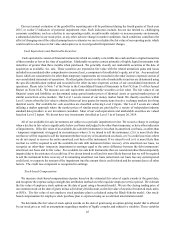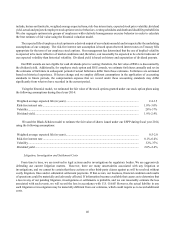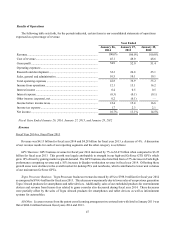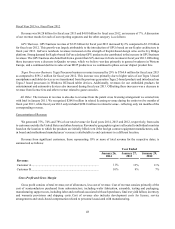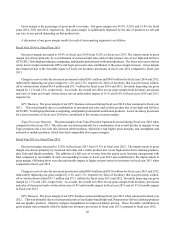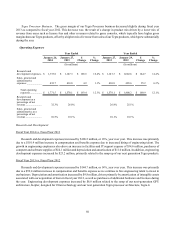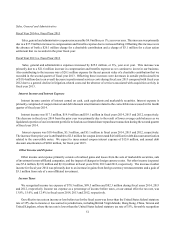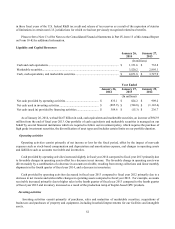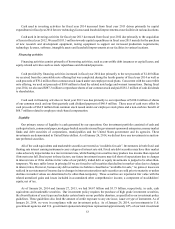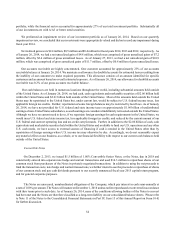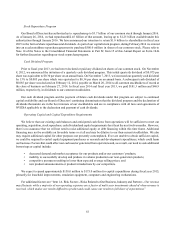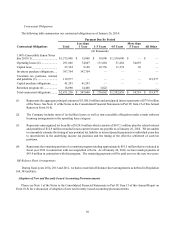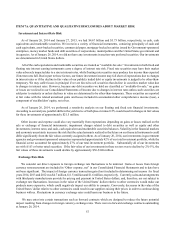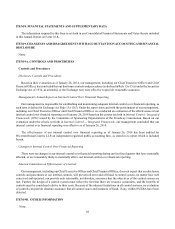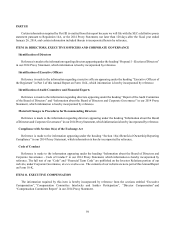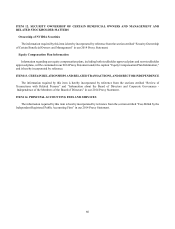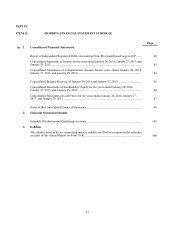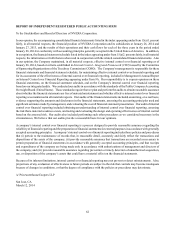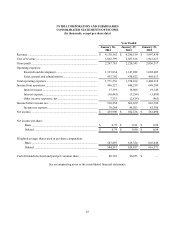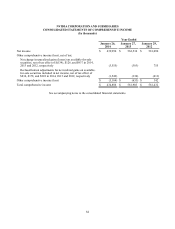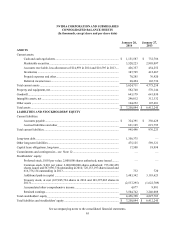NVIDIA 2013 Annual Report Download - page 199
Download and view the complete annual report
Please find page 199 of the 2013 NVIDIA annual report below. You can navigate through the pages in the report by either clicking on the pages listed below, or by using the keyword search tool below to find specific information within the annual report.55
Stock Repurchase Program
Our Board of Directors has authorized us to repurchase up to $3.7 billion of our common stock through January 2016.
As of January 26, 2014, we had repurchased $2.45 billion of that amount, leaving up to $1.25 billion available under this
authorization through January 2016. We have announced our intention to return $1.0 billion to shareholders in fiscal year
2015 in the form of share repurchases and dividends. As part of our capital return program, during February 2014 we entered
into an accelerated share repurchase agreement to purchase $500.0 million in shares of our common stock. Please refer to
Note 14 of the Notes to the Consolidated Financial Statements in Part IV, Item 15 of this Annual Report on Form 10-K
for further discussion regarding our stock repurchase program.
Cash Dividend Program
Prior to fiscal year 2013, we had never declared or paid any dividend on shares of our common stock. On November
8, 2012, we announced the initiation of a quarterly cash dividend program. This initial quarterly dividend of $0.075 per
share was equivalent to $0.30 per share on an annual basis. On November 7, 2013, we increased our quarterly cash dividend
by 13% to $0.085 per share which was equivalent to $0.34 per share on an annual basis. A subsequent cash dividend of
$0.085 per share was declared on February 12, 2014, payable on March 20, 2014 to all common stockholders of record at
the close of business on February 27, 2014. In fiscal year 2014 and fiscal year 2013, we paid $181.3 million and $46.9
million, respectively, in dividends to our common stockholders.
Our cash dividend program and the payment of future cash dividends under that program are subject to continued
capital availability and our Board of Directors' continuing determination that the dividend program and the declaration of
dividends thereunder are in the best interests of our stockholders and are in compliance with all laws and agreements of
NVIDIA applicable to the declaration and payment of cash dividends.
Operating Capital and Capital Expenditure Requirements
We believe that our existing cash balances and anticipated cash flows from operations will be sufficient to meet our
operating, acquisition, stock repurchase, cash dividend and capital requirements for at least the next twelve months. However,
there is no assurance that we will not need to raise additional equity or debt financing within this time frame. Additional
financing may not be available on favorable terms or at all and may be dilutive to our then-current stockholders. We also
may require additional capital for other purposes not presently contemplated. If we are unable to obtain sufficient capital,
we could be required to curtail capital equipment purchases or research and development expenditures, which could harm
our business. Factors that could affect our cash used or generated from operations and, as a result, our need to seek additional
borrowings or capital include:
• decreased demand and market acceptance for our products and/or our customers’ products;
• inability to successfully develop and produce in volume production our next-generation products;
• competitive pressures resulting in lower than expected average selling prices; and
• new product announcements or product introductions by our competitors.
We expect to spend approximately $150.0 million to $175.0 million for capital expenditures during fiscal year 2015,
primarily for leasehold improvements, emulation equipment, computers and engineering workstations.
For additional factors see “Item 1A. Risk Factors - Risks Related to Our Business, Industry and Partners - Our revenue
may fluctuate while a majority of our operating expenses are a factor of multi-year investments ahead of when revenue is
received, which makes our results difficult to predict and could cause our results to fall short of expectations.”


